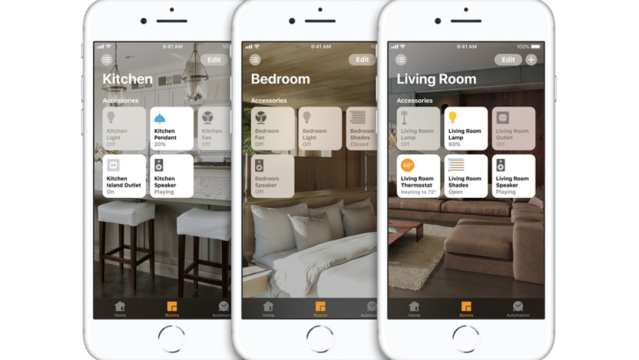Apple’s Home app makes it easy to control all your smart home tech right from your iPhone, but because this is Apple we’re dealing with, it also comes with some restrictions. The biggest drawback is that Home only works with a small subset of HomeKit-approved smart lights, switches and other gadgets.
That often means paying extra to stay inside Apple’s ecosystem, but there’s a way to get around HomeKit’s restrictions. All it takes is a program called Homebridge and a little coding.
What’s Homebridge and How Does It Work?
Homebridge is a server that runs on Node.js. As the name implies, it acts as a bridge between Apple’s HomeKit and other devices. It also supports IFTTT.
That makes Homebridge great for controlling all your smart home gadgets through Apple’s Home app. One Reddit user recommends stocking up on cheap smart plugs from Xiaomi to turn your entire home into a smart house. Basically, anything that doesn’t work directly with Apple’s software should benefit from this workaround.
The one big drawback is that you may be opening yourself up to hackers and other risks. Apple requires every device to go through a ton of testing and follow strict security rules if it wants HomeKit approval. That may limit the pool of approved gadgets, but it also means you don’t have to worry as much about security. Homebridge is also open source, so you’re relying on a loose community of developers to keep it updated rather than a trusted company such as Apple.
[referenced url=”https://www.lifehacker.com.au/2017/11/how-to-create-a-virtual-home-button-on-the-iphone-x-that-really-works/” thumb=”https://i.kinja-img.com/gawker-media/image/upload/t_ku-large/rswovv2nexp3lb2cpzfq.jpg” title=”How To Create A Virtual Home Button On The iPhone X That Really Works” excerpt=”iOS: Using the iPhone X means relearning almost everything you knew about navigating in iOS. That’s because Apple removed the Home button, replacing that nice tactile input with a bunch of new swipes and gestures.”]
How to Install HomeBridge
If you have a Mac computer at home that’s always running (such as a desktop computer or a Mac Mini that doubles as a media player) that’s probably the best option. iMore has a detailed guide to installing Homebridge on macOS. Just don’t forget to back up your computer first in case something goes wrong.
You can also install Homebridge on Windows if you don’t have a macOS computer on hand. But again, you’ll want to make sure it’s a PC that’s always on for the software to work.
If you don’t already have a computer to run Homebridge, the best option may be to pick up a cheap Raspberry Pi computer and use it as your hub instead. In that case, Github has a step-by-step guide to walk you through the process.

Comments